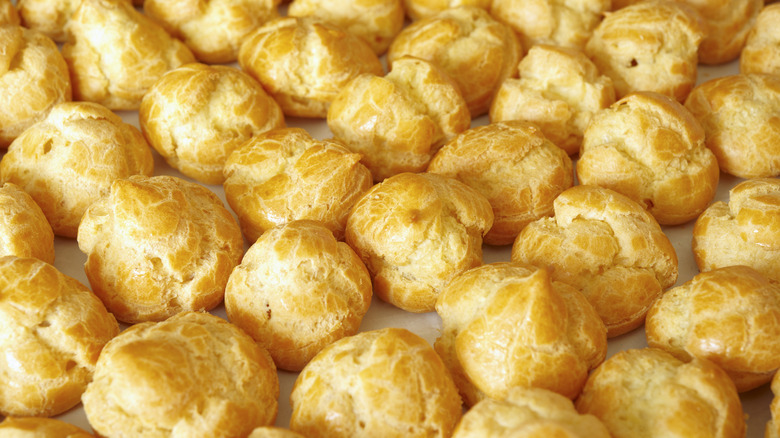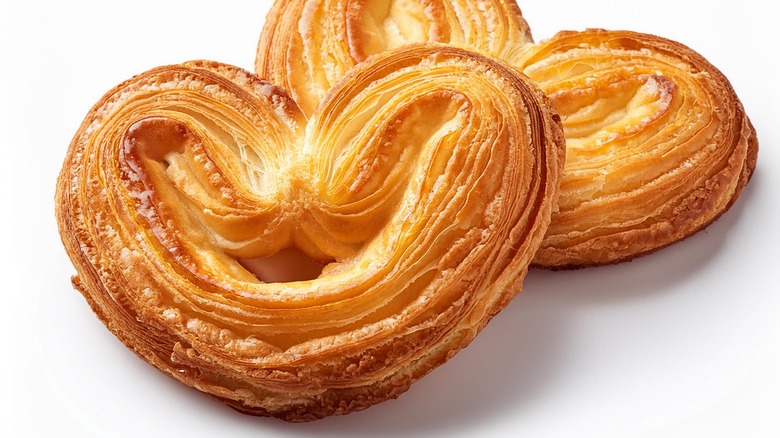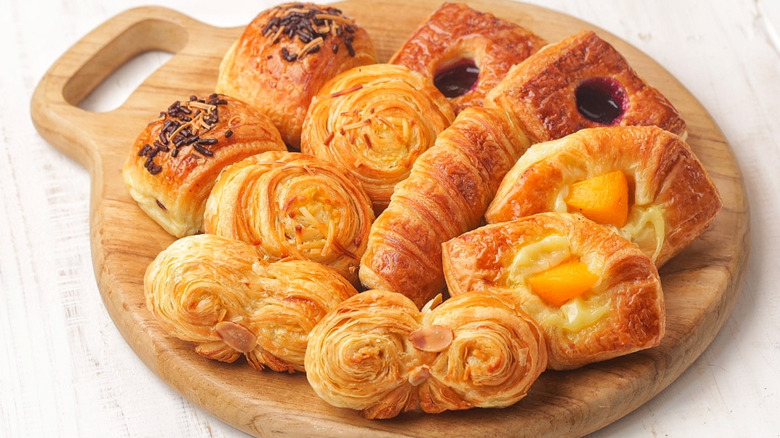What Is The Difference Between Choux And Puff Pastries?
If you've ever bitten into a crispy, flaky croissant and then later enjoyed a cream-filled éclair, you might assume they're made from the same kind of flakey dough. After all, both have layers, both are golden brown, and both make any dessert table look way fancier than it actually is. But here's the twist: Choux pastry and puff pastry couldn't be more different, both in how they're made and what they're used for.
So, two pastries, one big difference; what is it? Puff pastry rises because of alternating layers of butter and dough, while choux pastry puffs up thanks to steam. That's right, one relies on fat, and the other gets its lift from water evaporating in the oven. The results? Flaky, buttery layers for puff pastry and airy, hollow pockets for choux. But why does that matter, and what does it mean for your baked goods? Let's break it down.
Puff vs. choux: what's the deal?
At first glance, puff pastry and choux pastry might seem similar, but they couldn't be more different in how they're made. Puff pastry is made by layering dough and butter over and over again, a technique known as lamination, which creates those delicate, crispy layers we love in croissants and turnovers. Puff pastry dough doesn't contain eggs at all, relying solely and entirely on steam from butter to create its signature rise.
Choux pastry, on the other hand, is a much wetter dough that starts out on the stovetop. Instead of layering butter, choux dough is cooked before baking to remove excess moisture. Then, when it hits the oven, the remaining water inside turns to steam, creating the airy structure that makes éclairs, cream puffs, and gougères so light and hollow they're perfect for filling to the brim with deliciousness.
Despite their differences, these pastries are often confused because they both rise dramatically and can be used for both sweet and savory treats. Although puff pastry is best for buttery, crispy layers, choux pastry is perfect for fillings like custard, whipped cream, or even cheese.
What to use (and how to cheat a little)
So, when should you use puff pastry, and when should you reach for choux? Puff pastry is your best bet for making anything that needs layers, such as croissants, palmiers, or a quick shortcut for pie crust. On the other hand, choux pastry is perfect for pastries that need filling, like profiteroles, or desserts like banana cream pie eclairs. Since it puffs up with steam, it creates the perfect shell for whatever creamy or cheesy filling you dream up.
And if making laminated puff pastry sounds like too much work, don't worry. We have easy hacks for making rough puff pastry that cuts down on time without sacrificing those buttery layers. Not to mention, if you want something even faster, we also have a blitz puff pastry method that cuts down the work even more without sacrificing texture! Whether you're after crisp, flaky bites or airy, cream-filled puffs, both pastries have their place. And now that you know the difference, you'll never mix them up again.


